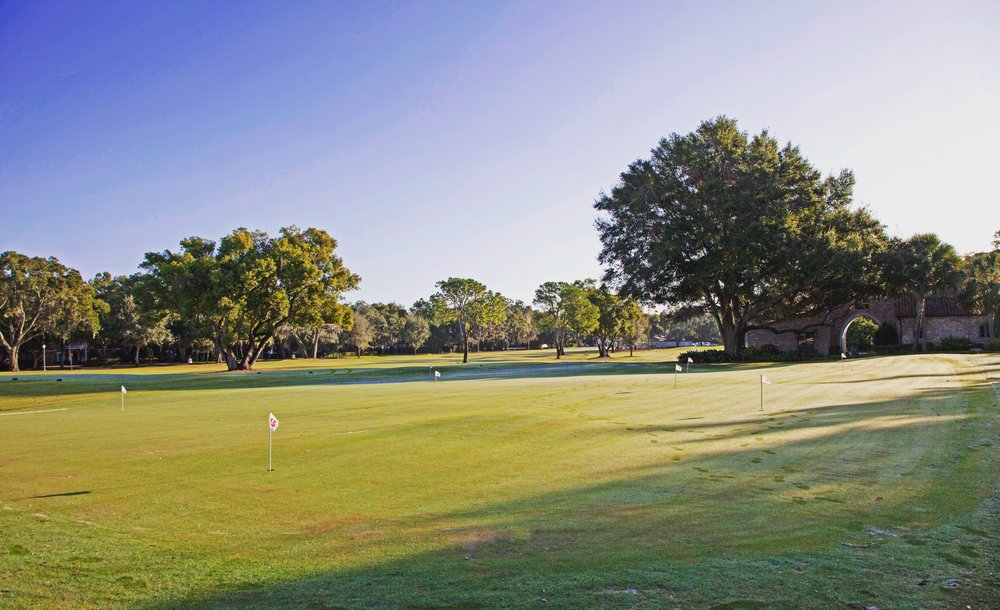Who is your favorite golf course architect and what is your favorite course that they have built? Also, what course or architect do you feel influences your designs the most?
-Teddy Keller
Favorite Architect – My favorite architect(s) is the team of Coore & Crenshaw (C & C). I find the work of Bill Coore and his guys to be interesting, very natural and extremely well aged from a texture and character context. The aesthetic quality and nuance of his work is as natural as nature itself, which I find very educational. Of the 4 or 5 C & C courses I have played, my favorite is Streamsong Red in Florida. Both courses at Streamsong are very good in my opinion, and the thing about the Red that really got my attention was how naturally if fit and flowed through a very unnatural site. I haven’t been that impressed by a new golf course in very long time!
Donald Ross has had the most impact on my design style and approach to golf architecture. I have restored 15 Ross courses to date and seldom does a day go by I don’t learn something new or different from studying his work. Traditional style architecture is within my initial approach to any design decision I make, it is not always the end means, but I find you cannot go wrong applying the principles of Donald Ross when working in this business. I recently reworked the Dogwood course at Country Club of North Carolina designed by Ellis Maples who was mentored by Donald Ross as a young architect. His aesthetic style (boldly flashed sand) of bunkers differed from Ross in most cases, and Maples also utilized modern construction equipment moving considerably more earth in his work especially under the greens. However, strategically off the tee and into the greens, you can clearly see Ross’s influence in Maples’s decision making process. Even when I do original holes or work with other classic architects’ work, I generally find myself instinctively relying on the basic skills I’ve learned through my exposure to Ross. – Kris Spence, Kris Spence Golf Design

Coore & Crenshaw's Streamsong Red - Photo Credit: Streamsong Resort
What is the architectural feature that you see most often utilized in a negative or poor way? Why do you think that is the case?
-Kyle Truax
I would say “containment mounding” is the most poorly utilized architectural feature. While perhaps grounded in theory and in function, it often falls short during implementation. Some of my favourite types of golf holes are the ones that repel golf balls, not contain them.
An example would be the 13th at Lahinch – the drivable par-4 is one of the course’s most menacing golf holes. The unpredictable nature of the front hillock feature is what makes it so interesting to play and negotiate. – Riley Johns, Integrative Golf Co (Listen to our podcast with Riley Johns here)

The 13th at Lahinch Golf Club - Photo Credit: Riley Johns
What’s the cost of maintaining a Muirfield Village bunker vs a St Andrews bunker vs a Royal Melbourne bunker?
-Michael Wolf
This is a great question, as bunker maintenance and costs get brought up a lot. I will take a stab at answering to the best of my knowledge, but I am sure a Superintendent could answer this better than I could. My initial thought would be that a bunker at Muirfield Village would be by far the most expensive of the group, and I would guess that St. Andrews would be next followed closely by Royal Melbourne.
Muirfield Village is a great golf course with maintenance levels approaching the likes of Augusta National. I would assume that they have a high dollar sand ($100+/ton) like Pro Angle from Ohio, and have a good bunker liner and drainage. While in graduate school, I worked on a maintenance crew at a high end private club with similar bunkers to those at MV and this was our typical maintenance practice during the growing season:
Raking Bunkers – 4 guys for 3-4 hours a day, 6 days a week
Flymo Bunker Faces – 3 guys for 6 hours, once a week
Edge Bunkers – 2 guys for 6 hours, twice a month
Primo Bunker Faces – 1 guy 4 hours, twice a month
When things went dormant, we still raked the bunkers daily, but did not have to flymo, edge bunkers or primo the bunker faces. – Trey Kemp, Colligan Golf Design
When designing a course with championship golf in mind, how do you balance playability and enjoyment for the average-to-poor golfer? What are your favorite strategies that you have used and have seen that accomplish both?
-Peter C
No one wants to play golf out of long green grass, but it’s a hazard on the American Tour where narrow fairways are seen as a way of testing driving skills. They do test straight driving – but much less do they reward thoughtful driving.
Wide fairways and courses like St Andrews, Royal Melbourne and Augusta test accurate hitting to an advantageous part of the fairway – yet give the average player space to play. The key is to then build greens best approached from places close to the driving hazards, asking players to take a bold line and hit a better than average tee shot.
Augusta, Royal Melbourne and The Old Course are quite easy courses for the bogey player to shoot 90, but they are difficult to shoot under par for the championship player because Alister MacKenzie (the architect at Royal Melbourne and Augusta) understood why The Old Course worked so well.
Championship golf too is dependent on firm greens – greens where players have to bounce the ball in one place to have it finish in another. Soft greens and windless conditions provide a very limited test of golf – even if the course is 7,600 yards long. It’s getting increasingly difficult as the ridiculous disparity between where championship players drive and where average players drive increases – and will continue to increase – Michael Clayton, OCCM Design
Would you build a bunker-less course if given the opportunity?
-Kyle Truax
We would definitely build a bunker-less course, if asked. However, the task would not be without significant challenge. While the combination of short grass and contour is my favorite form of hazard, bunkers are an extremely important tool in design. Without being able to use them, my biggest concern would be that our work would become repetitive. However, this paradox could drive us in a new direction creatively, and I can see myself getting excited with that possibility. The burden would fall to us to build eighteen unique, strategic holes that rely primarily on contour to create interest. Sounds like fun – when do we start?!? – Rob Collins, King-Collins Golf Course Design
How important is golf course drainage when you design the routing and grade out the holes? Do you keep an engineer on retainer to bounce floodplain/drainage questions off of? Is keeping an engineer around something that is considered seeing how much of the cheaper land is always located in these areas?
Scott G.
When asked what the three most important things to consider when designing a golf course, Pete Dye once quipped “Drainage, drainage, and drainage”. While he may have overstated his case, I think he got his point across. As an architect there are a thousand things you can do to make a golf course great, but if it doesn’t drain it’s going to fail.
While we do not keep an engineer on our staff, a civil engineer may or may not be part of the client’s project team. Their inclusion is typically dependent upon the site, project location, permitting, and the overall intensity of the development. – Thad Layton, Arnold Palmer Design
What do you think is the most interesting, innovative trend in the industry whether it’s happened or not (i.e. reversible golf courses, 6 hole courses, putting courses, etc)?
-Emmett Walsh
One interesting trend in the industry is the addition of putting courses. In addition to introducing young players to golf, it allows for people of all ages and skill levels to work on their game, even when they don’t have time or money to play a full round. While putting courses have been around for ages, the addition of “Thistle Dhu,” the 18-hole putting course at Pinehurst, kicked off a new trend in the United States. We’ve seen more and more private and public courses and resorts include them ever since.
When renovating Winter Park Golf Course (Winter Park, FL), we replaced an old croquet field with an 18-hole community putting course next to the 9th tee. Anyone can play on it for free. On opening day, Don Mahaffey (irrigation designer) witnessed a group of younger kids playing on the putting course. As another kid was walking down the street, this group of kids yelled out, “Hey, why don’t you come over and have a putting contest with us?” What a great way to grow the game! – Keith Rhebb, Rhebb Golf Design

The putting course at Winter Park - Photo Credit: Keith Rhebb
Do you consider greens speed when designing green complexes, so the maximum number of hole locations can be used?
-Alistair Philp
Green speed is one of the most important aspects of designing and shaping green complexes. We chat about it incessantly when we are going thru the design and shaping process. The problem is, when you’re shaping and building the greens, you never really know what speeds they will be running at when the grow-in is complete, or 5 or 10 years down the line. We talk about it with the Superintendents and greenkeeping team during the process, but often the people in those positions change or ownership wants something different than our original intentions.
Unfortunately, there is a misconception that fast green speeds mean quality, both by the general golfing public and the greenkeeping world. This means that green speeds are often much faster than we, the architects, would prefer. In recent years, we have toned down our shaping a bit, because green speeds tend to be faster than we would like.
As far as green speed being related to pin positions, we always try to create distinct areas of greens that can change the strategy of the hole when the pin position changes. It’s harder to do that if the greens are more benign, but I think in recent years we have learned to weigh all those things together and create greens that are fun, challenging, and elegant all at the same time. – Casey Krahenbuhl, DMK Golf Design (Listen to our podcast with Casey Krahenbuhl here)
As a business where frequency of work is important, how do you manage the conflict of interest whereby sometimes doing nothing is better than doing something for the sake of doing something? e.g. the Old Course tweaks that are so unnecessary. Or is there ALWAYS improvements to be made?
-Matthew Dickinson
Luckily for us we have not really run into this too much. I guess it really comes down to an ethical dilemma and taking the best route based on your personal or firm’s ethics. The few times when a club or course has wanted to do something that we did not feel was in their best interest we have tried to provide all the information we could to show them why we feel that way.
A good example of this happened a few years ago when a municipality contacted us to look at a golf course for them. The golf course was a privately run course, open to the public that was struggling and the city wanted to buy it, have us renovate it and then they would run it. We went out to the course and looked around and after looking at the course, clubhouse, maintenance facility & equipment, financials, etc. we recommended that the city not purchase the course. While it was tough for us to recommend this, because it cost us a pretty sizable renovation job, it was the right thing to do and the city is better for it. After presenting our recommendation and report to the city, they let us know that they would still like to provide their citizens with a golf course in the future and have several large parcels of land that could be used for a golf course. Nothing has happened yet, but hopefully it will one day and if it does, I hope the city will keep us in mind for the design work. – Trey Kemp


 by
by 
